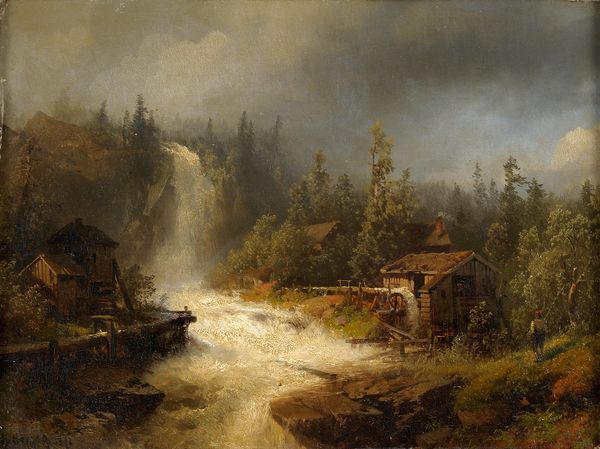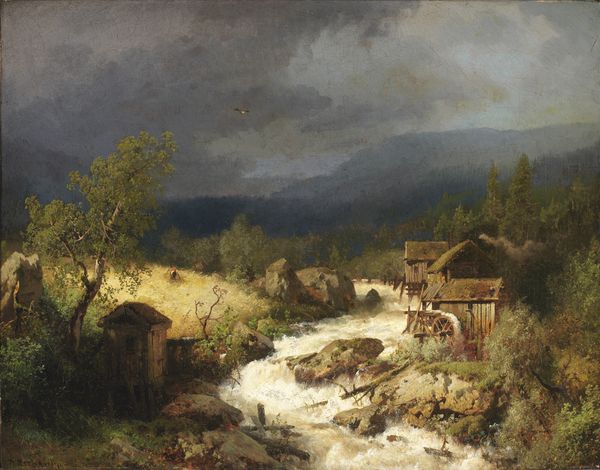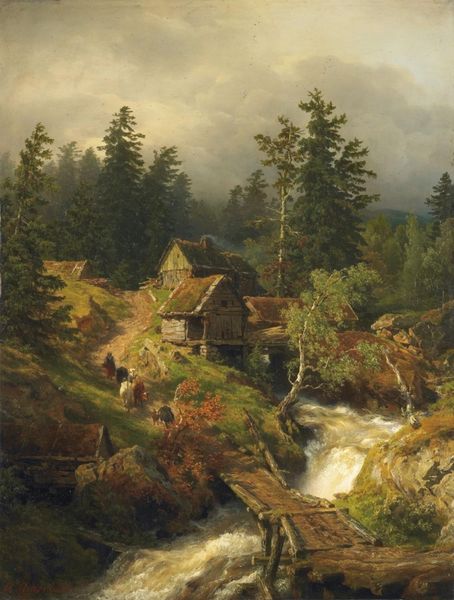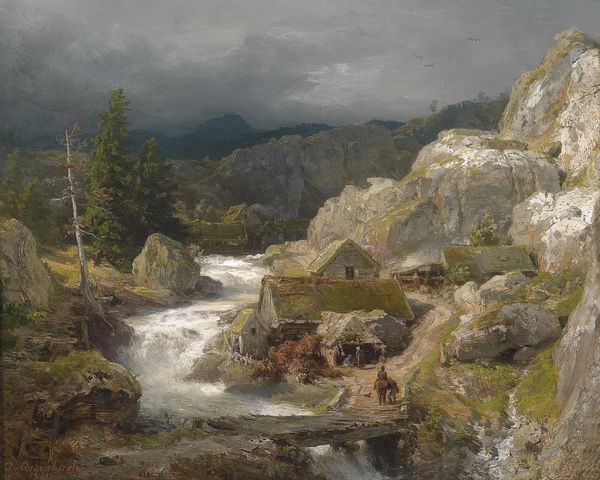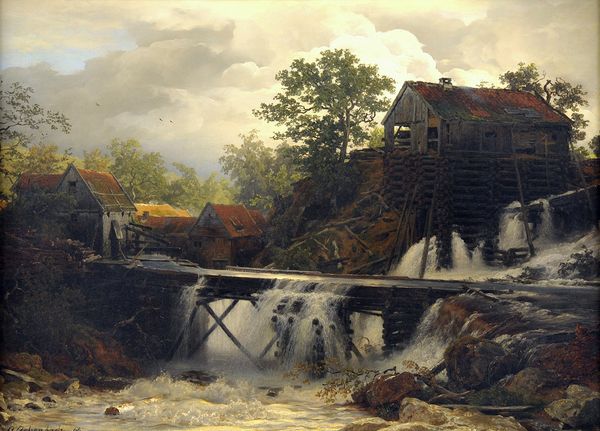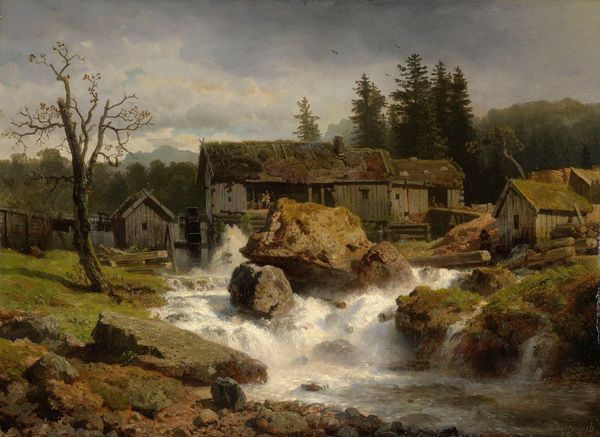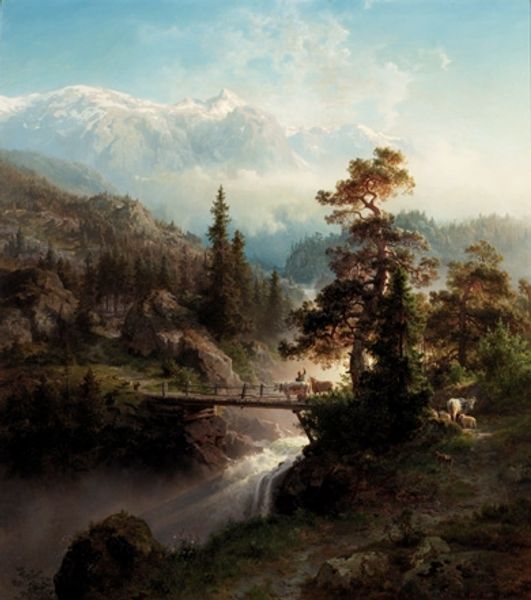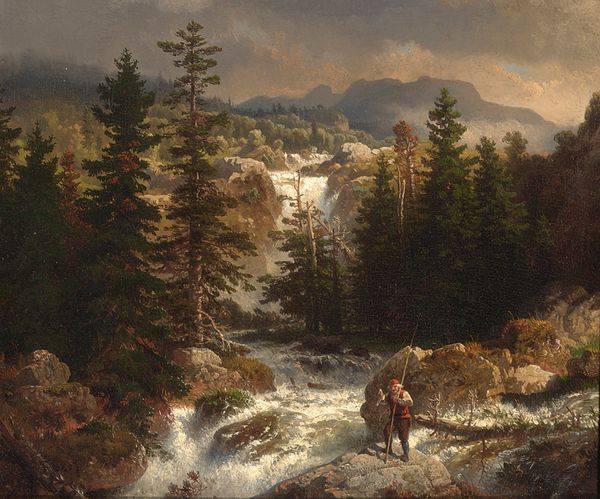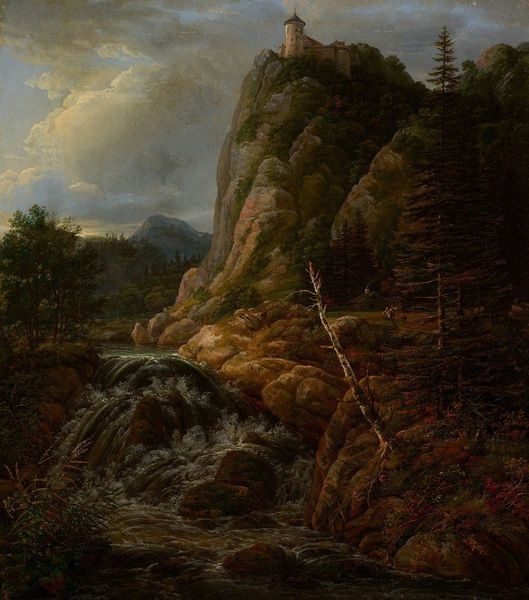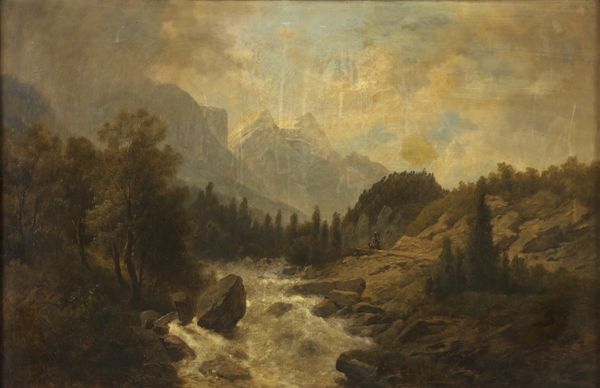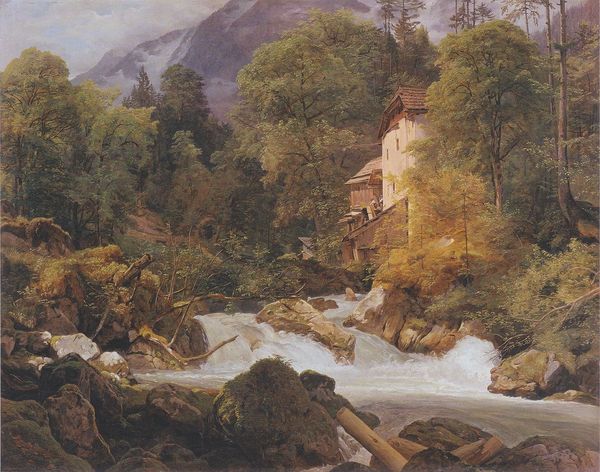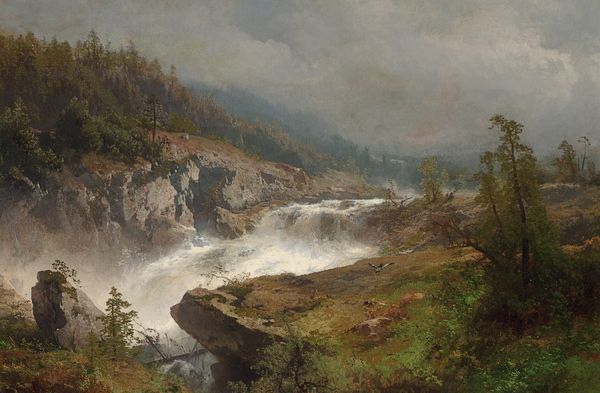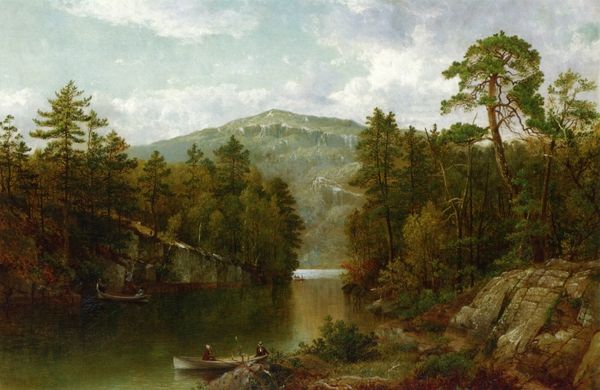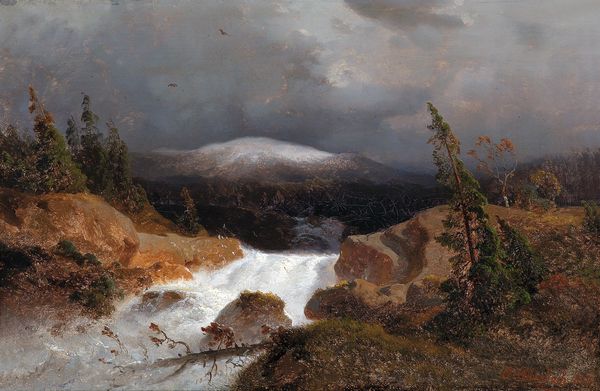
painting
#
painting
#
landscape
#
landscape
#
nature
#
landscape photography
#
romanticism
#
realism
Copyright: Public domain
Editor: So, this is "River View with a Mill," by Hermann Ottomar Herzog. It’s… immersive. All that churning water really gives a sense of dynamic energy. What do you see in it? Curator: Immediately, I’m drawn to the juxtaposition of nature's raw power and humankind's attempt to harness it. Notice how the mill, though built by human hands, seems dwarfed, almost consumed, by the landscape. Doesn't that tension speak to the cultural memory of our relationship with nature, a struggle between control and respect? Editor: Absolutely. I noticed the relative size, but hadn’t considered the underlying conflict you point out. I guess that also plays into the bird motif, free of human control soaring overhead? Curator: Precisely. That bird becomes a potent symbol, doesn't it? A counterpoint to the constrained energy of the mill. Birds often represent freedom, the soul, a connection to something beyond the physical world. Consider, too, the psychological weight of water—its associations with purification, but also with destructive force. How does the artist utilize the symbolic resonance of water? Editor: You mean besides just showing a lot of it? The movement, maybe? That relentless push...suggesting unstoppable change? Curator: Precisely. And look at how the light catches the water—a constant flux between illumination and shadow. Herzog masterfully uses light not just to depict, but to imbue the scene with a spiritual dimension. It reminds me of the sublime romanticism in landscape painting during the period. Editor: It makes me wonder if paintings like these fostered specific attitudes towards nature? It’s really got me thinking about our interactions with nature! Curator: Yes, me too, in an allegorical sense! Paintings act like artifacts and looking through that cultural and symbolic perspective makes this so fascinating.
Comments
No comments
Be the first to comment and join the conversation on the ultimate creative platform.
